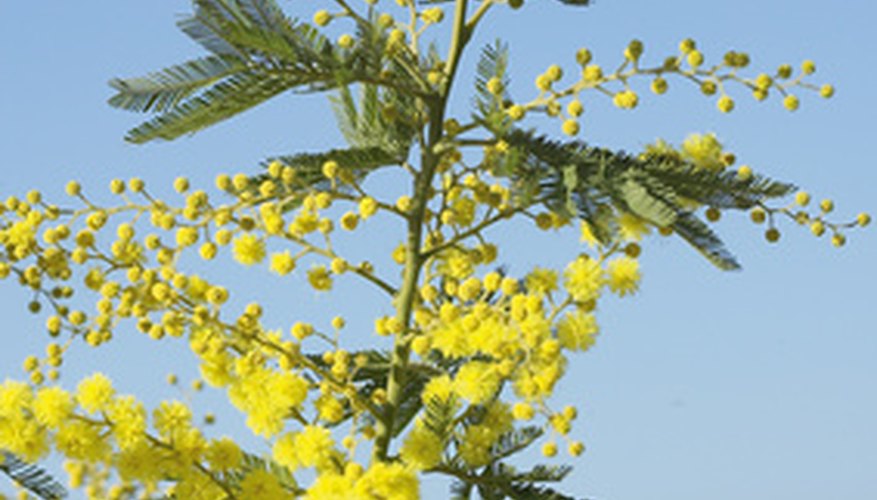Mimosa hostilis, also known as Mimosa tenuiflora, is a member of the mimosa genus, a small shrub that is native to the Amazon rainforests of South America. It shares the characteristics of other mimosa species, with one important distinction. The bark of its roots contains a hallucinogen called dimethyltriptamine, or DMT, that is used by indigenous Brazilian tribes for shamanic rituals. The method for storing mimosa hostilis root bark is no different than storing other herb roots. It must be properly dried first.
- Mimosa hostilis, also known as Mimosa tenuiflora, is a member of the mimosa genus, a small shrub that is native to the Amazon rainforests of South America.
- The bark of its roots contains a hallucinogen called dimethyltriptamine, or DMT, that is used by indigenous Brazilian tribes for shamanic rituals.
Place mimosa hostilis root bark on a baking tray. Set your oven on 71.1 degrees C. Place the baking tray and bark in the oven for 10 minutes to kill any insects, insect eggs or other contaminants. Remove and allow the bark to cool to room temperature.
Break or shred the dried bark into small pieces. Place it in an opaque glass jar. Screw the lid on tightly. Put the jar in a warm spot for about a week. Check every day to see if condensation appears on the inside of the jar. If it does, the bark is not dry enough. Repeat the heating process.
- Break or shred the dried bark into small pieces.
- Check every day to see if condensation appears on the inside of the jar.
Put the bark back into the glass jar. Screw the lid on tightly. Store the jar in a cool, dry, dark place in a closet, pantry or basement.
TIP
Do not overheat mimosa hostilis root bark. Like any herb, excessive heat will destroy its oils.
WARNING
Mimosa hostilis root bark can be used for treating inflammation, burns and skin infections. However, it is illegal in the U.S. to use or extract DMT from the root bark.
